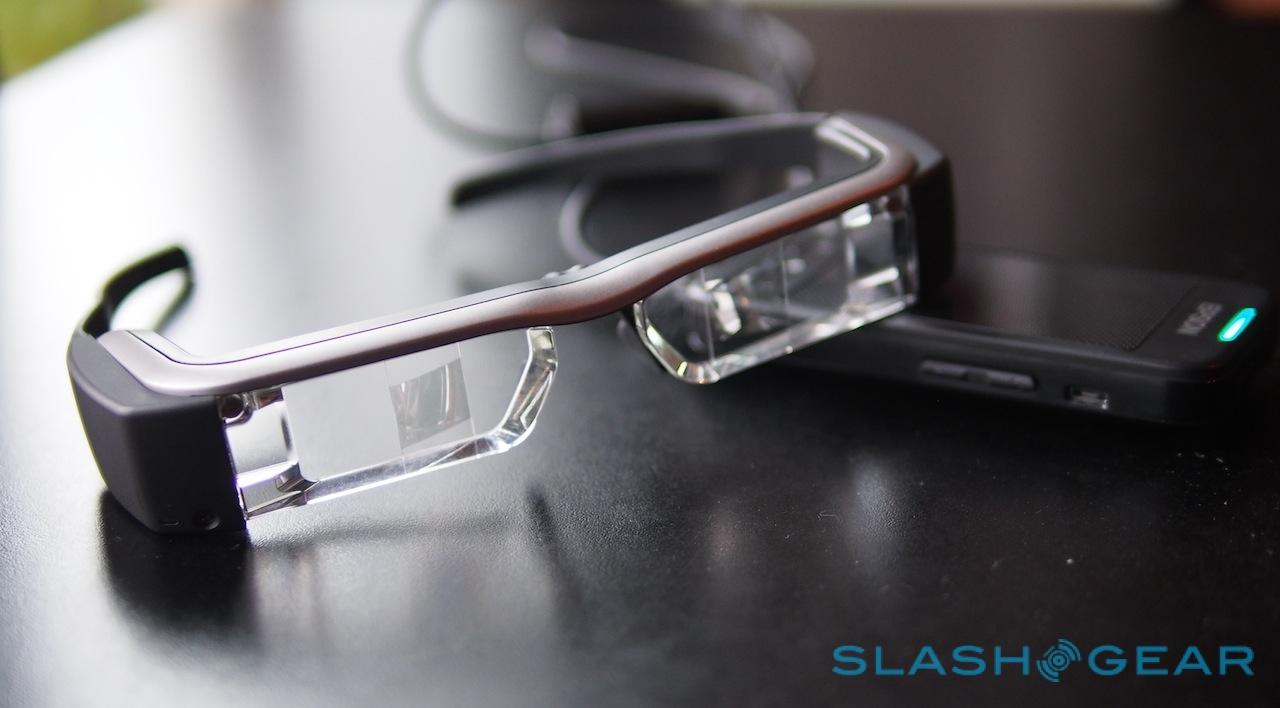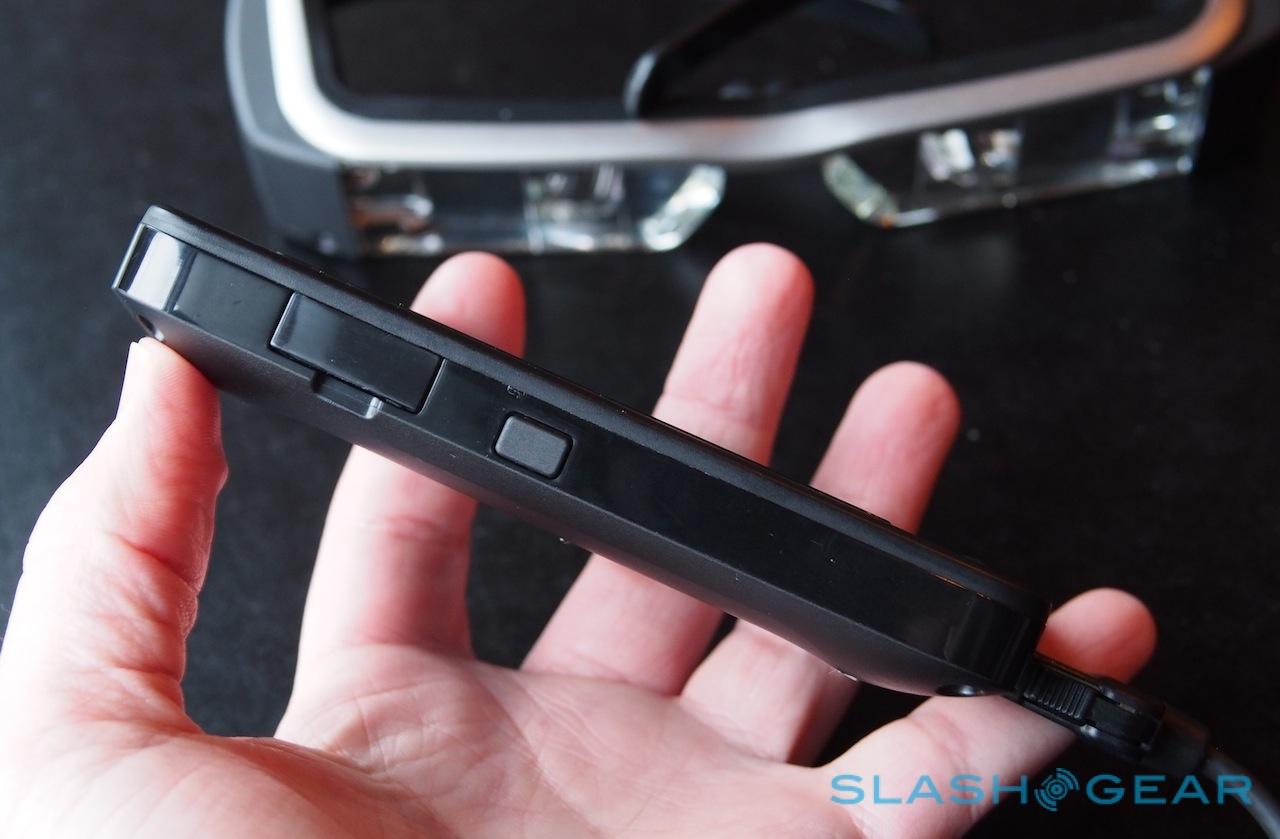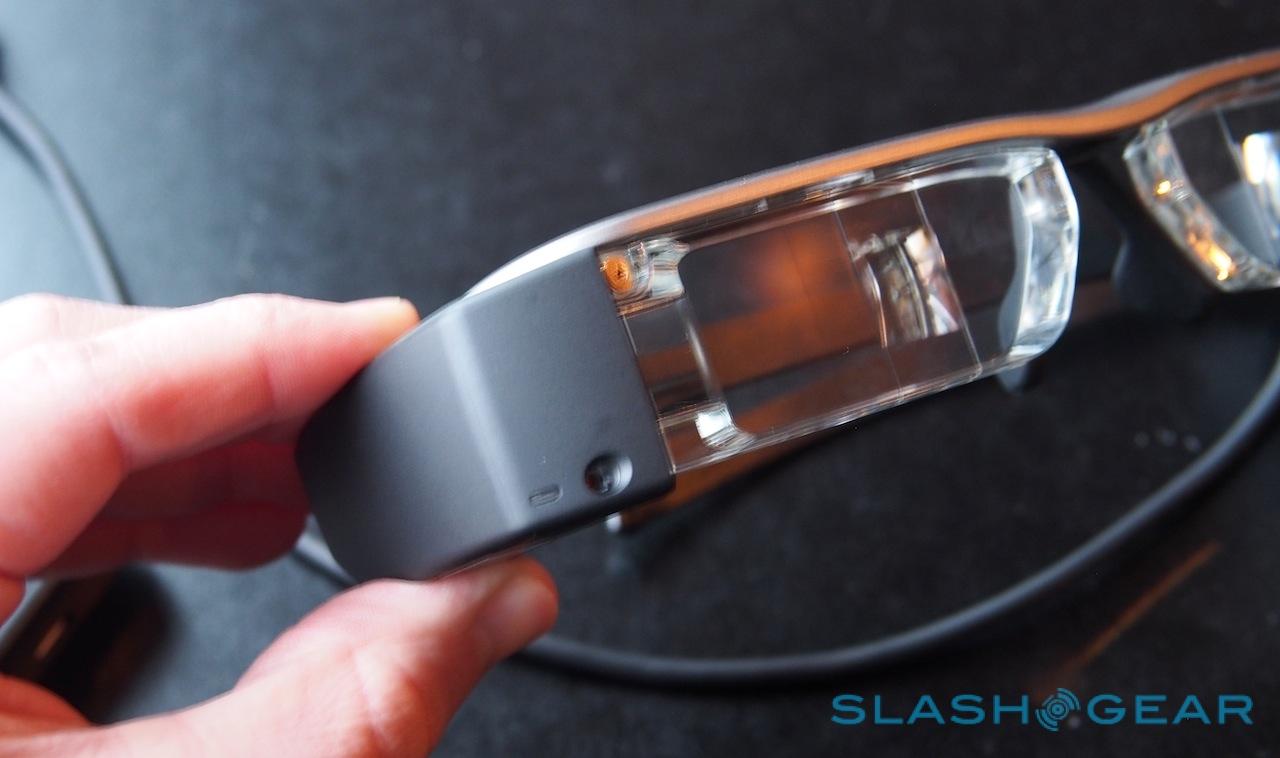Beyond Glass: Inside Epson's Scheme To Make The De-Facto Smart Glasses
Epson can forgive you if your first thought when you hear augmented reality is Google Glass, even though you're wrong. Google may never had actually described its wearable as an AR device, but a combination of the over-promising original concept video and a general naivety about the segment overall led many would-be Glass wearers to be surprised at what the headset really is: a convenient notifications pane in the corner of your vision. If you're looking for true AR, though, Epson might have the answer. We caught up with the company to check out its latest headset, the Moverio BT-200, and find out why it's confident it can become the de-facto choice for augmented reality.
We're not unfamiliar with the Moverio BT-200. In fact, we briefly tried out the wearable back at CES 2014 in January, an update to the original BT-100 first released in 2012.
Where Glass has a monocular eyepiece pushed up out of your line of sight, the Moverio range goes in entirely the opposite direction. Each lens of the broad eyewear has its own display, and they're right in your field of vision when you put them on. Because there are two, and because it's independently controllable as to what each shows, the BT-200 can handle 2D and 3D graphics.
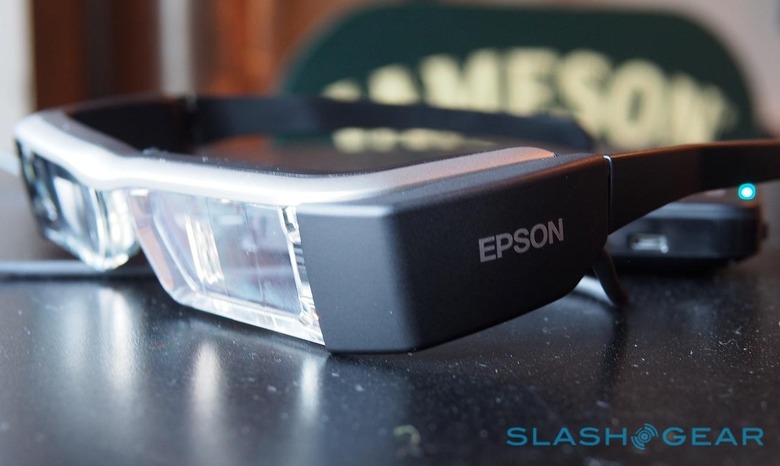
More importantly, the layout allows Epson to overlay computer-generated graphics directly on top of what's happening in the real world around you. By adjusting the brightness of each display – in fact a pico-projector module housed in the hinge section on either side – and the color of the on-screen graphics, the degree to which the virtual blends with the real can be managed. Dark colors are more likely to be transparent on the Moverio; bright colors will generally stand out from the real.
"I think you have, going into it, this consumer perception where most people haven't tried Glass and they don't understand that it's a very small screen outside of your field of view" Eric Mizufuka, product manager for new products at Epson America, told us. "Glass did an awesome, awesome job of finding a use-case and building for that use case, which is a comfortable way for a always-on, out-of-the-way device that fits naturally into your lifestyle. Whereas we want to be in your field of view, we want a large image, we want to do 3D, we want to be the de-facto augmented reality smart glasses."
Hold your phone out in front of you, maybe a foot or two so away from your face. If you've got an Android phone, all the better, since Moverio runs Google's OS. Now imagine that display is actually transparent: you can still see what's going on beyond the screen through the Android graphics.
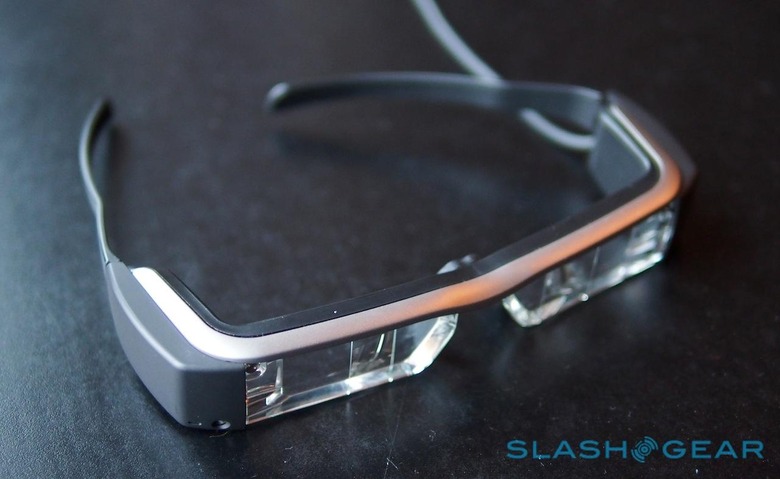
That's what Epson's smart glasses offer, the chunky plastic frames dropping a 960 x 540 resolution display in front of each eye. It takes a little getting used to at first, particularly when starting from the Android homescreen: we found our eyes trying to either focus on the virtual screen or the world we could just make out behind it. The temptation was to look down and over the screen to keep eye-contact when we were talking with Mizufuka.
After a while, however, and particularly with apps intended for augmented reality purposes, seeing both real and virtual simultaneously becomes more natural. That leads just the physical design: Epson has at least addressed those who wear existing prescription eyewear from the outset, and you can twist up the nosepiece so that it rests on top of your frames if you prefer, while a clip-in prescription frame set will be included in the box if you want a more lightweight system. Nonetheless, it's noticeably wide despite being 60-percent lighter than its BT-100 predecessor.
"The reason why it's broad is really to fit over glasses. So, these are designed to fit over most prescription lenses, so that's why we've gone a little bit wider with the form-factor," Mizufuka explained. "If you look at the smart glasses market, what we really need is a lot of different SKUs. But that's a huge investment in terms of the manufacture to produce more than one SKU. So we really just went with one SKU to suit everybody."
Scale – and early-adopter cash – will help there, though. "Once we start to see enough penetration, when we start to sell enough of these, that we can say "okay, this business is huge, it requires more investment; let's start by building that second SKU."" the wearables spokesperson predicted. "So maybe the non-glasses SKU would be a lot... we could immediately go less wide, or have a version for prescription glasses wearers, or even just a more customized fit."
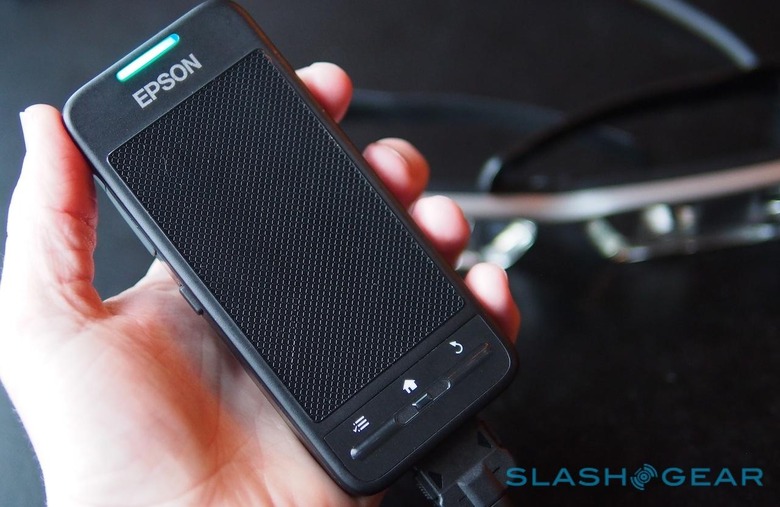
Augmented reality isn't new – the first example dates back to 1968, though the term itself wasn't used until the early 90s – but some of the key challenges those early pioneers faced are still topical. Both generations of Moverio use an external control box, which in the case of the BT-200 accommodates the 1.2GHz TI OMAP 4460 processor, 1GB of RAM, 8GB of storage (with a microSD card slot too), WiFi b/g/n and Bluetooth 3.0 radios, and a touchpad used for navigation. Most importantly, though, it holds the separate battery, unlike Glass' all-in-one design. That, Mizufuka concedes, is the trade-off Epson demands for its more capable displays.
"We have much larger displays [than Glass] and we have two of them; we have an always-on use-case, they're always on" he pointed out. "Since we also see ourselves as the augmented reality platform of choice for smart glasses, the camera's also always on. So there are big power requirements, which [the separate box] addresses. You get up to six hours of battery life. Obviously there are some technological things we can do to lessen the power consumption in the near term."
The displays may be Epson's biggest battery headache, but they're also the company's secret weapon. Turns out, manufacturing large quantities of high-quality lenses that don't give the wearer migraines and without having to throw away a large proportion of the less-then-perfect ones in the process is a skill few possess.
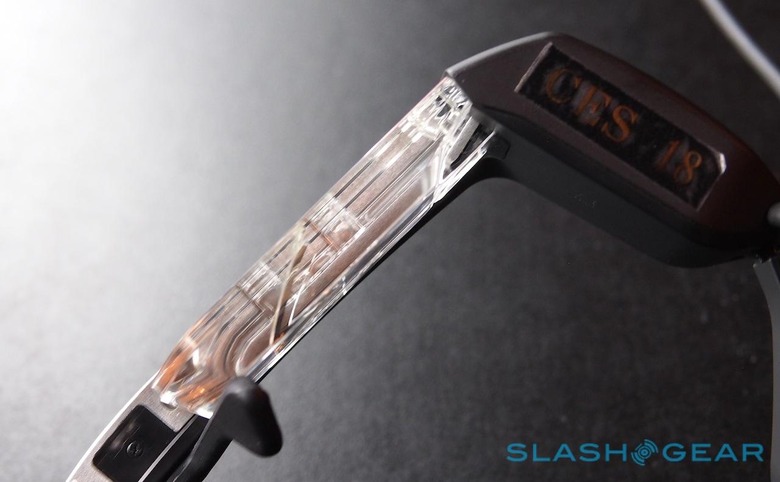
"When you talk about competitive advantages in the smart glasses space, I would definitely say it's Epson's ability to scale and produce in mass" Mizufuka confides. "Particularly the lenses. These lenses are POC polycarbonate, so manufacturing them at scale is relatively inexpensive because the material is inexpensive. But the manufacturing process to be able to produce these in mass... like, typically for a lot of manufacturers their yield is very low, because they're so hard to produce with high precision."
That'll pay dividends when the wearables market explodes like many expect it to over the next 3-5 years, with Epson ready to cater to predicted demand whereas other firms are still effectively running closed-betas.
"Once we start shipping in March we're going to be widely available: we can manufacture these things in the hundreds of thousands," Mizufuka insists. "We don't need to just go out to small sets of owners, it's going to be widely available."
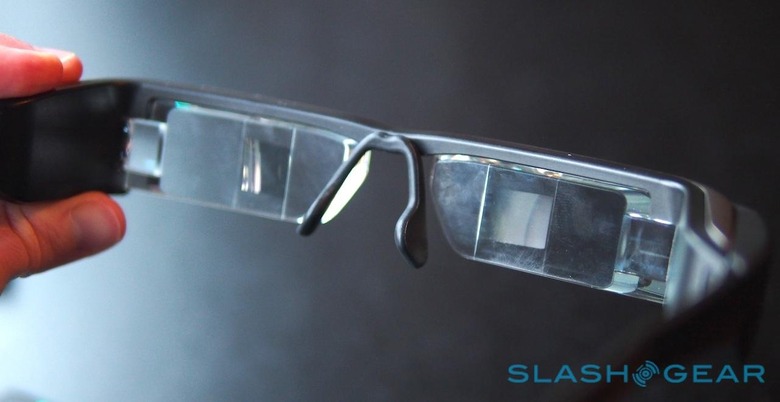
That explosion won't solely be based on availability, however, despite the clamor for even expensive wearables like Glass (Epson's BT-200 is up for preorder at $699, a fraction of what Google is charging for a spot in the exclusive Glass Explorer club). It'll take compelling use-cases and applications to do that, and there too Epson has taken a different approach than Google.
Google opted for control, limiting what software developers can run locally on Glass, and instead insisting that services run through its Mirror API – effectively a locked-down pipeline between the cloud and the wearable. Initially only a handful of partners were invited to create Glassware, though Google launched its broader developer program back in October 2013; still, the number of apps on offer – particularly through Google's own My Glass app – is limited.
That's the exact opposite of Epson's attitude, Mizufuka says, clearly admiring how Google has tackled usability on Glass but arguing that it was not the best approach for his company. "Google's taken a huge challenge on in building a unique UI, which is really cool but, for Epson, we needed to be as widely usable as possible. We wanted to utilize native Android" he pointed out. "So the touchpad actually provides relative seamless experience, it works with most Android apps out of the box."
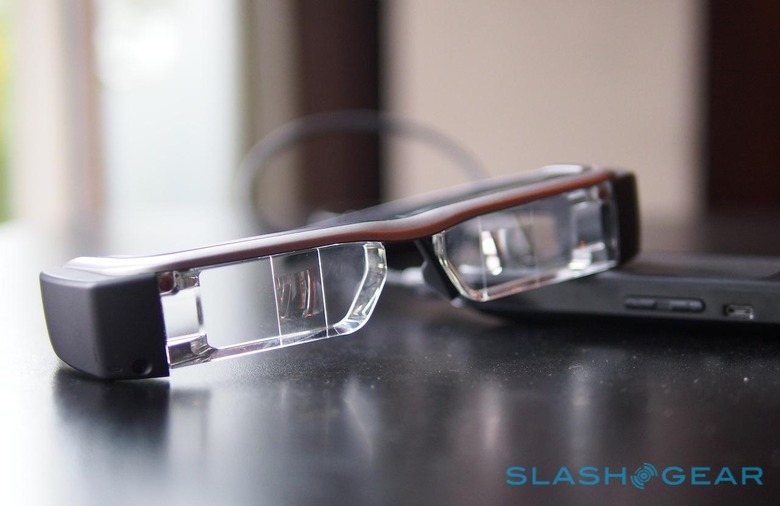
"But we're definitely investigating all options," he added, "and as we get more familiar and build out more applications that are smart glasses specific, we'll evaluate the design."
So just what are these killer apps that will persuade the everyday consumer that they'll want to see the world through a pair of digital lenses? Mizufuka is upfront about the fact that Epson doesn't really know, at least not yet, though he has some ideas based on what developers have been doing over the past couple of years with the Moverio BT-100, in addition to a lucky few who've been playing with pre-production BT-200 sets.
"Some of the interesting consumer applications that are being explored are second-screen experiences" he explained. "[For instance] an app that, you look at your TV, and you see your Twitter feed to the side, and actors and actresses above it, and maybe an IM chat with your friends about the game. And it all organizes around the TV, you're not looking down [at a phone or tablet], it's right there."
It's implementations like that – Epson effectively saying "hey, you watch TV, and you're usually playing on your phone or tablet too, aren't you; wouldn't it be great to integrate them better?" – which the company is counting on to challenge the lingering non-technical headache. An awful lot of people either can't see the point of wearables, think they look ridiculous, or both.
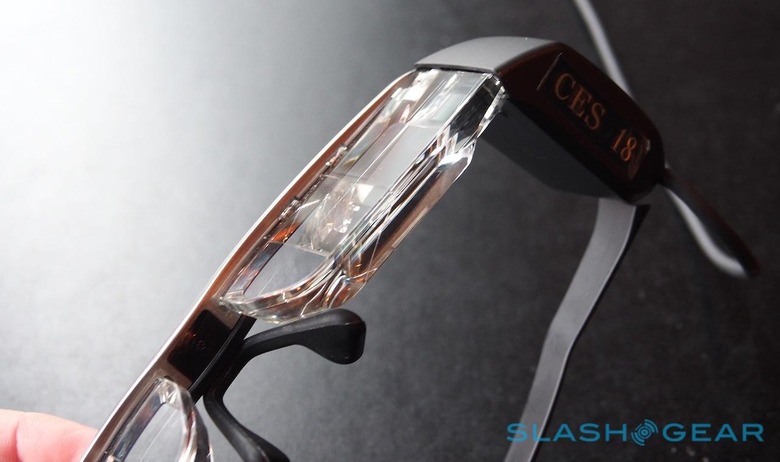
"There's still a stigma attached, public perception" Mizufuka concedes. "To overcome that, we're targeting some opportunities to get consumers more comfortable with practical use cases and practical applications, like augmented reality exhibits in museums, or even working with sporting venues to put up, like, the first yard marker, or instant replays. So they can have some positive experiences with the technology, get familiar with seeing people with them, and having them on."
We had the opportunity to try out some of the early games for the BT-200 that Epson's developer partners have cooked up. In one, the glasses flipped into 3D mode and showed us a virtual assault course to navigate, collecting gems as we went.
In another, the Moverio's camera was used to lock onto a printed prehistoric scene and then overlay virtual dinosaurs, trees, and marauding bugs over the top: by looking around the landscape and tapping the touchpad, we could direct the dinosaur around and have it belch fire at the bugs – not very prehistorically accurate, maybe, but certainly good fun.
Unfortunately, attempts to capture exactly what that experience was like on camera fell flat. As is the case with Glass, trying to share more broadly the feeling of wearing and interacting with smart glasses is tough going; that in itself makes convincing a skeptical public that it's worth considering exponentially harder.
Getting the Moverio into museums and sports venues will help. Meanwhile, Mizufuka explained, Epson is also chasing the enterprise side. Partner APEX Labs will be setting up "smart glasses demo centers" around the US with Deloitte Consulting, demonstrating what's being described as "the deskless worker", out in the world but still retaining real-time access to contextual information.
Some of the tools they'll get to use are already impressive, even in barely-finished prototype stage. We played with a stock management app which we could easily see Best Buy staff using, being guided to a particular product with on-screen arrows, then having information bubbles appear over the top of it like the petals of a blooming flower, containing stock levels, sales-per-hour, and technical information in case customers ask a tricky question.
Another app could identify pieces of machinery and show – with virtual tools overlaid – exactly how they should be dismantled and maintained, perfect for the roaming engineer who might need some expert assistance. A medical app by Evena Medical, built originally for the BT-100 but being ported to the updated model, uses an IR emitter to identify and overlay the veins in a patient's body, to make giving injections more accurate every time.
In all, Mizufuka thinks the enterprise is going to be more open-minded to wearables like Moverio than consumers will, at least initially. "The first thing is really finding those killer applications, and I feel like we've found some of those – or some of our partners have built them – on the enterprise side," he suggested, "but we're still looking for those applications on the consumer side." However, that should still pay dividends for a non-enterprise version, he argues.
"By implementing them on the enterprise side we can build a business case to invest more, continue to miniaturize, cut things down. So cost comes down, that's huge; size comes down."
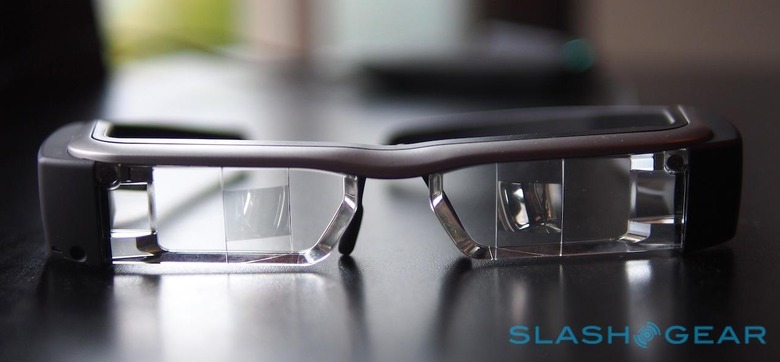
That may come sooner than we think, too. Epson is planning on announcing some big enterprise partnerships around wearables this year, we're told, with some significant news within the next 3-6 months. That'll kickstart a more iterative process on the consumer side, Mizufuka is convinced, benefiting not only from Epson's push but other projects like Glass and Meta (the startup which built its headset from BT-100 parts, and managed to capture the attention of father-of-wearables Steve Mann in the process).
"I feel like the other variable we need to tackle on the consumer side is just social acceptance, and I think we're going to get there through purpose-built applications, like museums and sporting events" Mizufuka concludes. "It's great that Glass is going out and working with athletes on the field, because I think those kind of use-cases are going to get people more comfortable with the platform, and just wearables in general. At that point, you have a small form-factor, people are comfortable with the concept, and you have applications... it's just going to build up little by little."

